Monthly Market Report: May 2022
Markets Holding Steady After Volatile Start to Q2
Brandon Yee, CFA, CAIA, Versant Capital Management, Inc.
DEVELOPED MARKETS
Developed Markets Rebound
In the month of May, international developed stock markets returned 0.83%. Japan and the UK recorded returns of 1.64% and 1.72%, respectively. The U.S. and Pacific ex Japan lagged other markets. International developed markets are down -10.32% YTD while the U.S. market is down -14.15%. Geopolitical risks, high inflation, and central bank tightening continue to be headwinds. Investors are expecting the Federal Reserve to reduce its holdings of Treasury bonds and mortgage-backed securities, which could cause long-term interest rates to increase. A rising rate environment could negatively impact stocks with long durations, such as growth stocks.
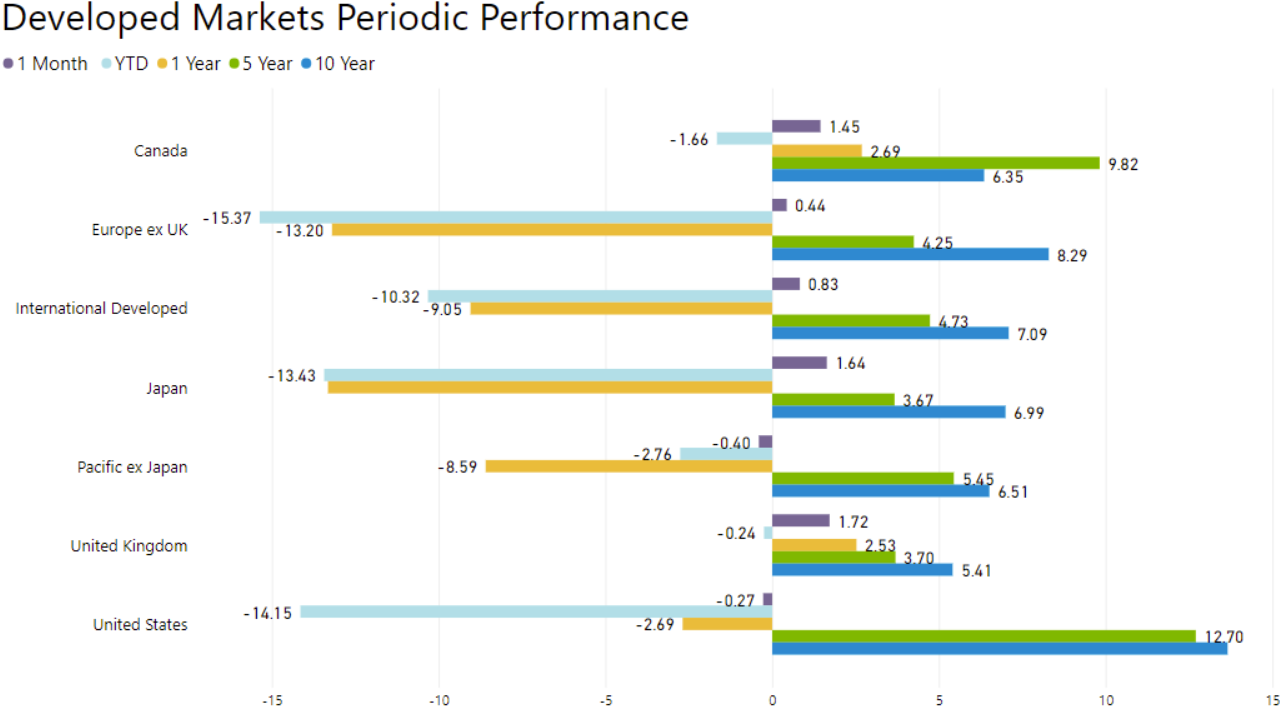
EMERGING MARKETS
Emerging Markets Mixed
Broader emerging markets posted a -0.01% return for the month. Brazil and Mexico recorded positive returns of 8.38% and 5.71%, respectively. India and China lagged other markets in May. Countries that export natural resources, such as Brazil, have benefited from this year’s inflationary environment. Any continuation of the Russian and Ukrainian war will support high energy and food prices. China’s stock market has been negatively affected by the decline within their technology sector. However, the Chinese market may benefit from future monetary easing by their central bank.
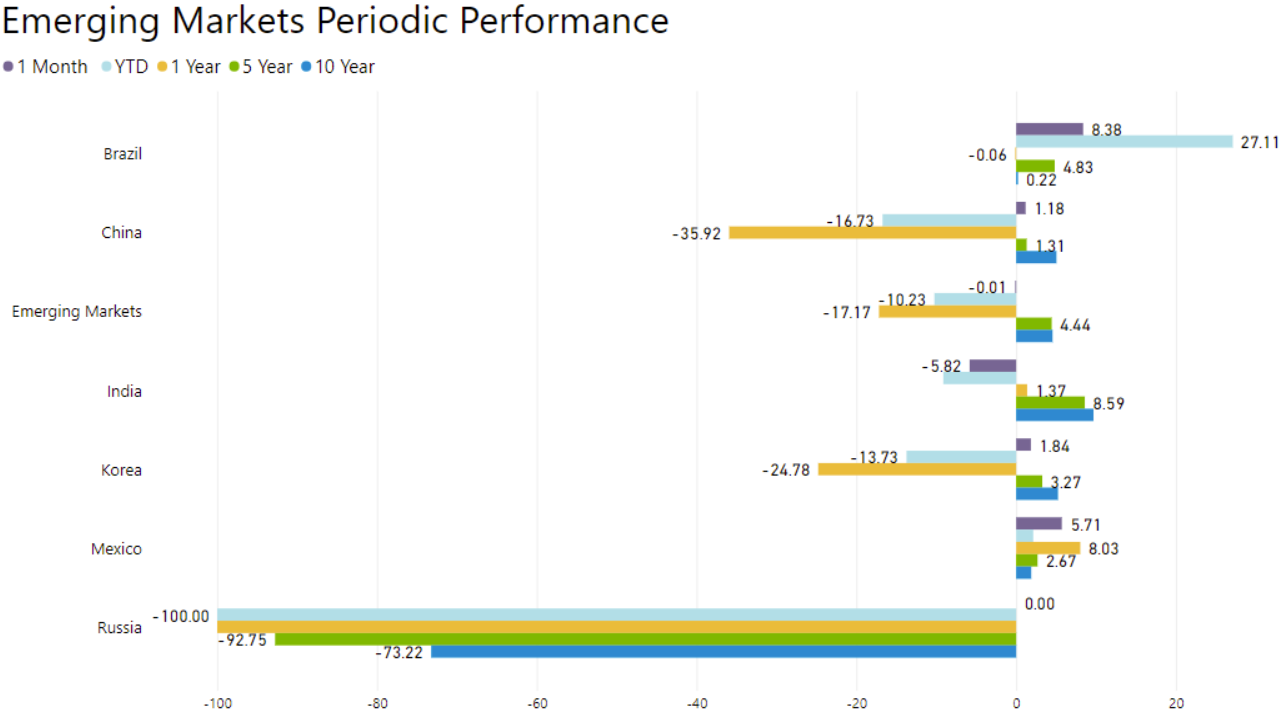
GLOBAL SECTOR
Energy and Infrastructure Outperform
Energy and infrastructure recorded positive returns of 13.7% and 3.72%, respectively, in May. Consumer discretionary and consumer staples lagged other sectors. The energy sector is up 46.6% YTD and 61% over the past year. Oil supply and demand dynamics would continue to be favorable in the short and medium term even if Russian oil sales were to resume. The materials sector has benefited from the market turmoil given its exposure to gold producers, fertilizer producers, and other miners.
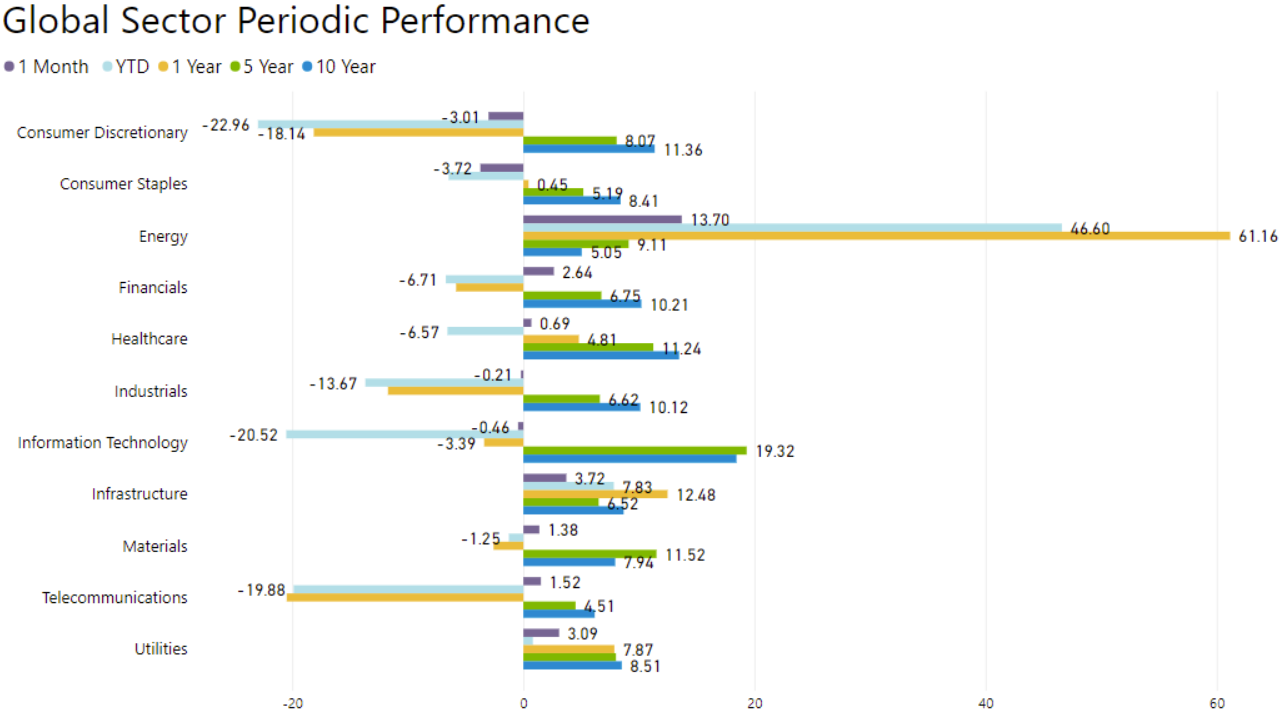
DOMESTIC EQUITY FACTORS
Value Outperforms in May
In May, value outperformed growth in the large-cap space and the small-cap space. Momentum recorded a return of -0.56%. Small-cap value stocks are now outperforming small-cap growth stocks over the past ten years. Their ten-year annualized return is now at 10.71%, slightly above small-cap growth’s ten-year return. Even after value’s strong performance, value stocks are still very cheap relative to growth stocks. Value-oriented sectors such as energy, financials, and materials may still have much more room to run.
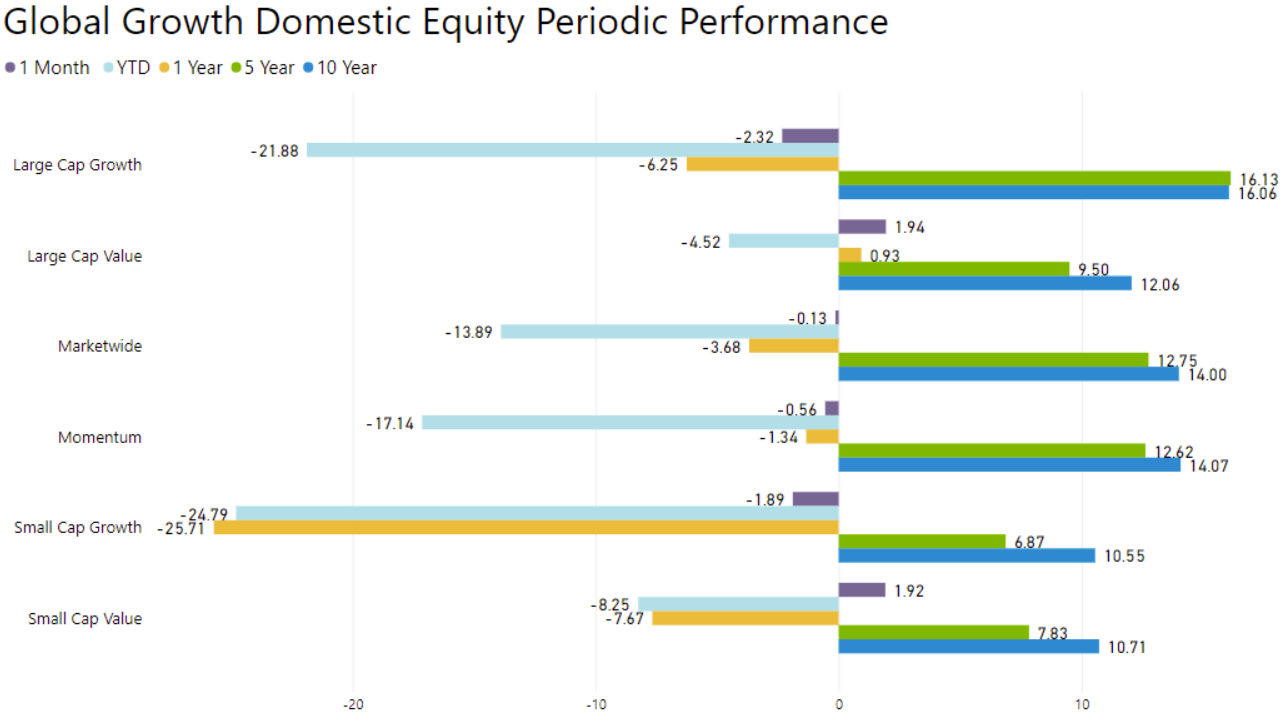
FOREIGN EQUITY FACTORS
Value Outperforms in the International Markets
In the international developed markets, value outperformed growth in the large-cap and small-cap space for the month. Momentum recorded a return of 0.65% while small-cap emerging market stocks posted a return of -0.39%. Valuations of value stocks are still very low relative to growth stocks in both international developed and emerging markets, which is consistent with the US market. The rotation from growth into value may resume as investors become wary of high valuations in growth stocks. Rising interest rates may also pose more of a risk to growth stocks than value stocks.
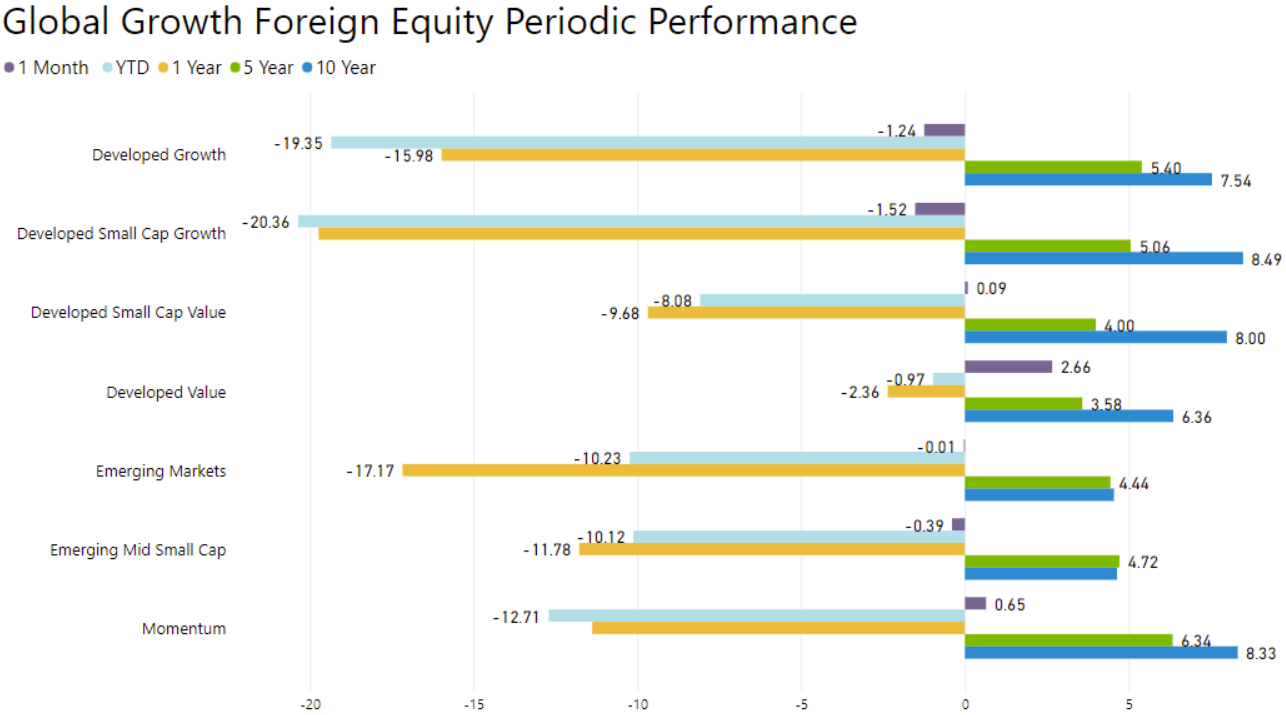
LIQUIDITY PROVIDERS
Interest Rates Rise
In May, the three-month Treasury bill index returned 0.04%. Investors expect multiple rate hikes this year due to the recently high inflation numbers and labor scarcity. However, savers will still face low real interest rates for the foreseeable future. The CPI has increased by 8.22% over the past year through the end of April.
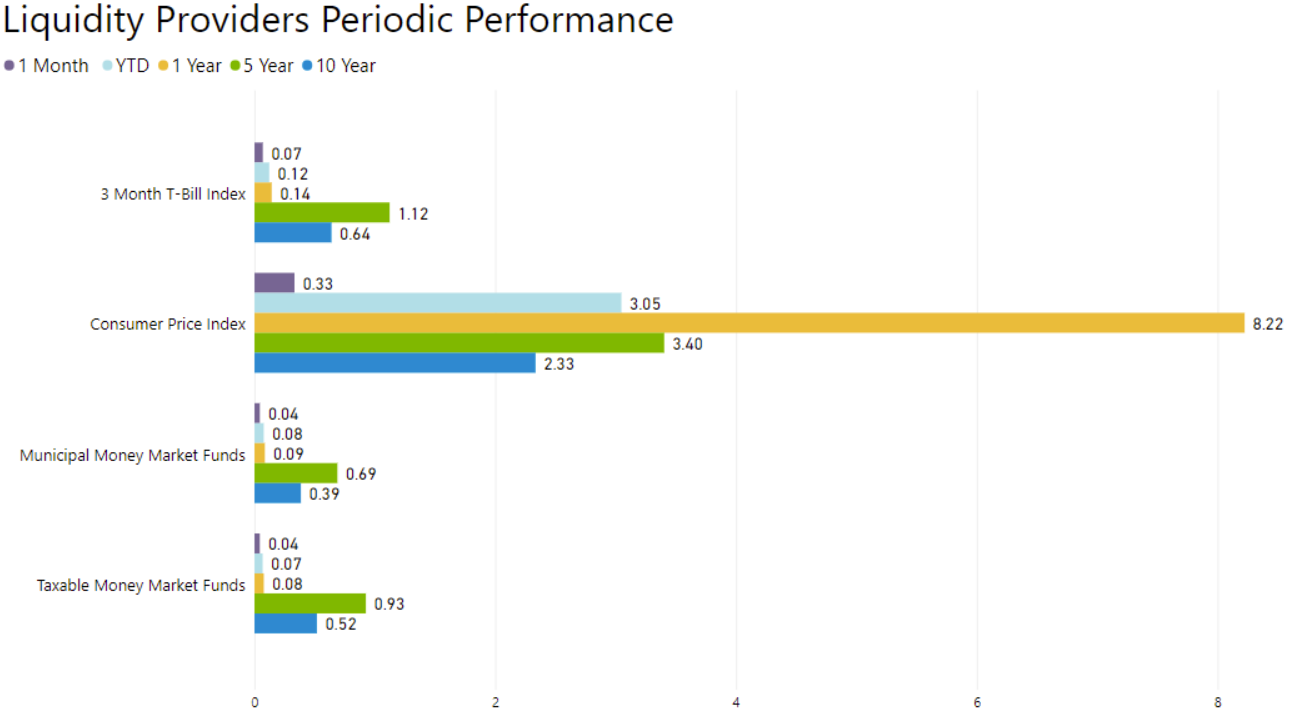
DISINFLATION DEFLATIONARY HEDGES
Fixed Income Investments Rebound
The returns of deflationary hedges were mostly positive for the month. Long-term municipal bonds returned 1.10% in May. The Bloomberg Barclays U.S. Agg Bond Index returned 0.64% for the month. High-yield bonds are down -7.76% YTD. If interest rates continue to rise, less creditworthy borrowers may face difficulties meeting their financial obligations. Among the deflationary hedges, only the SwissRe Global Catastrophe Bond index has a positive performance YTD. Catastrophe bonds are up 3.62% over the past year, providing a competitive yield without the equity-like volatility of leveraged loans and high-yield bonds. Real yields continue to remain around historical lows.
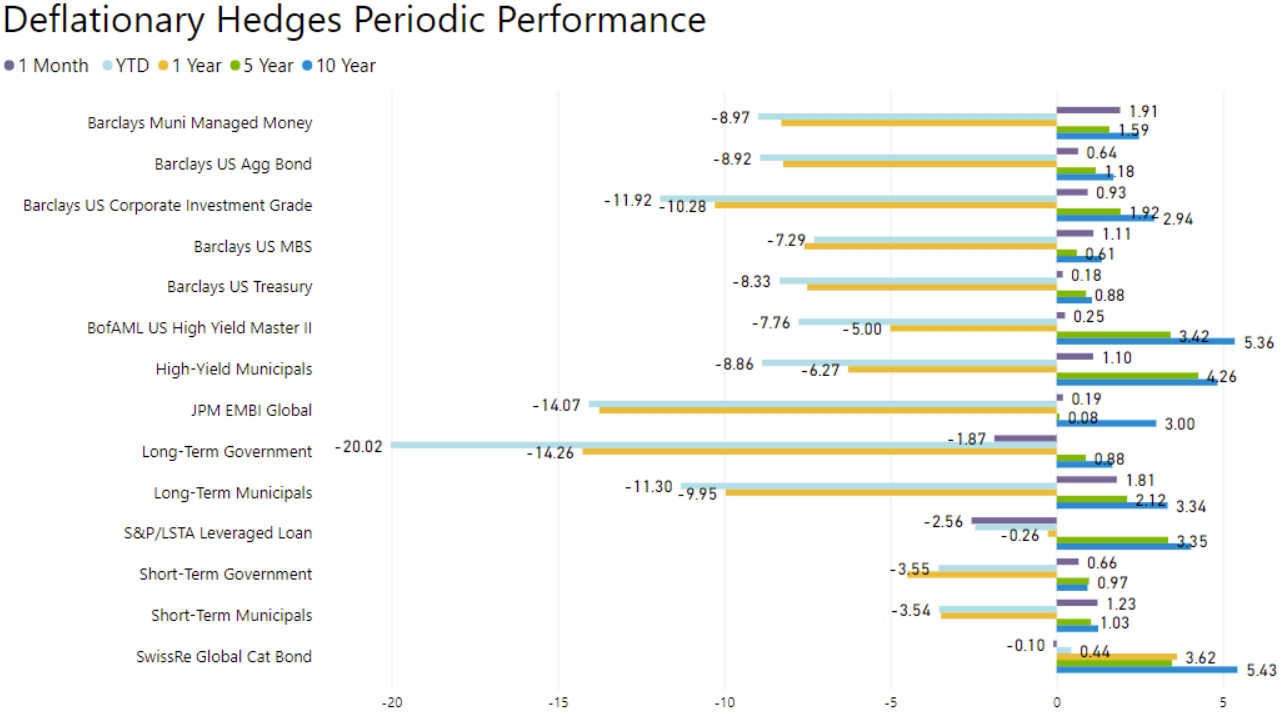
INFLATION SENSITIVE INVESTMENTS
Russian/Ukrainian War Impacting Commodity Markets
Inflation-sensitive investment returns were mixed for the month. U.S. natural gas and WTI crude oil were up 10.84% and 11.49%, respectively. The Bloomberg Commodity index posted a return of 1.52% in May. US natural gas and WTI crude oil are up 124% and 60%, respectively, YTD. Gold bullion is up 1.82% YTD, providing a nice hedge against geopolitical risks. The US dollar has materially strengthened this year, moderating gold’s return in US dollar terms. However, gold bullion is up much more relative to other major currencies. For example, relative to the Euro, gold is up 14% YTD. The standing of gold among central banks may grow as other countries observe how Russia uses its gold to withstand the impact of sanctions. Like oil’s future supply prospects, the future supply of gold may be constrained as exploration and capital expenditures have been muted.
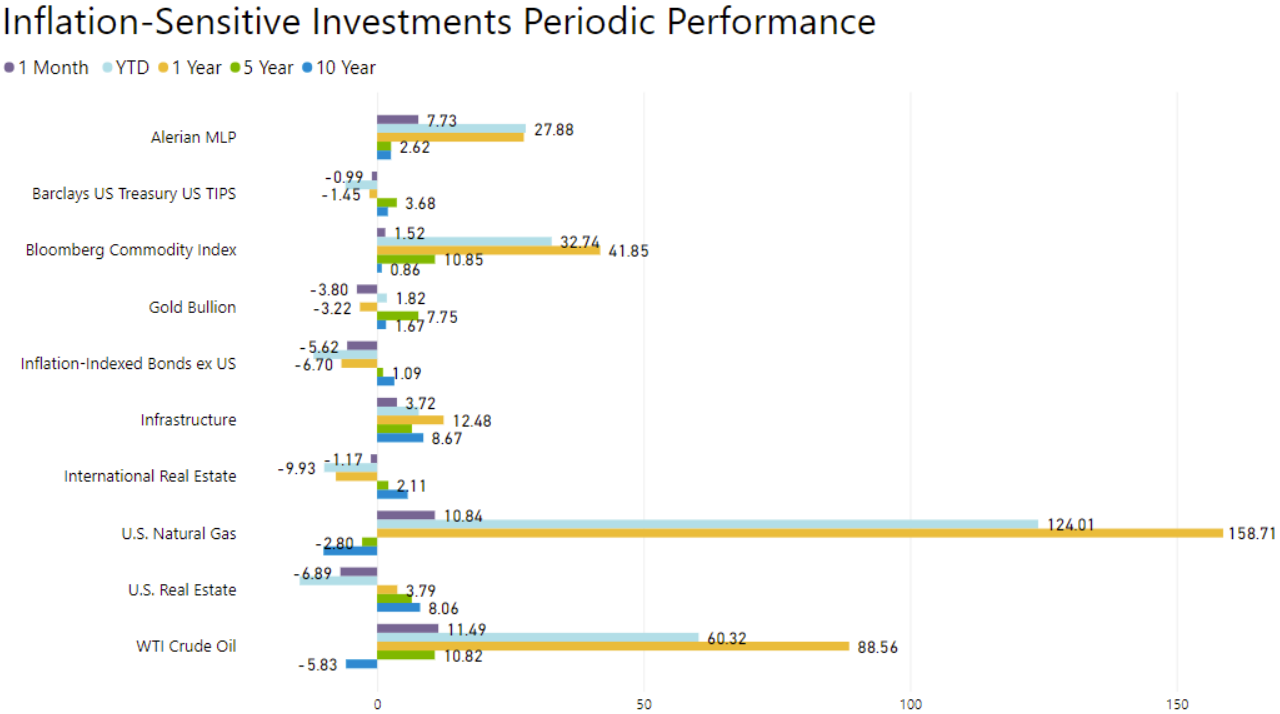
WORLD CURRENCIES
U.S. Dollar Mixed Versus Other Currencies
Over the past three months, the U.S. dollar appreciated against the Yen, Euro and Swiss Franc. The U.S. dollar depreciated against the Canadian dollar and Mexican Peso over the same period. However, the continuation of large U.S. fiscal deficits may weigh on the U.S. dollar in the medium-term to long-term. Gross federal debt to GDP stands at 124% and is forecasted to increase through the decade.
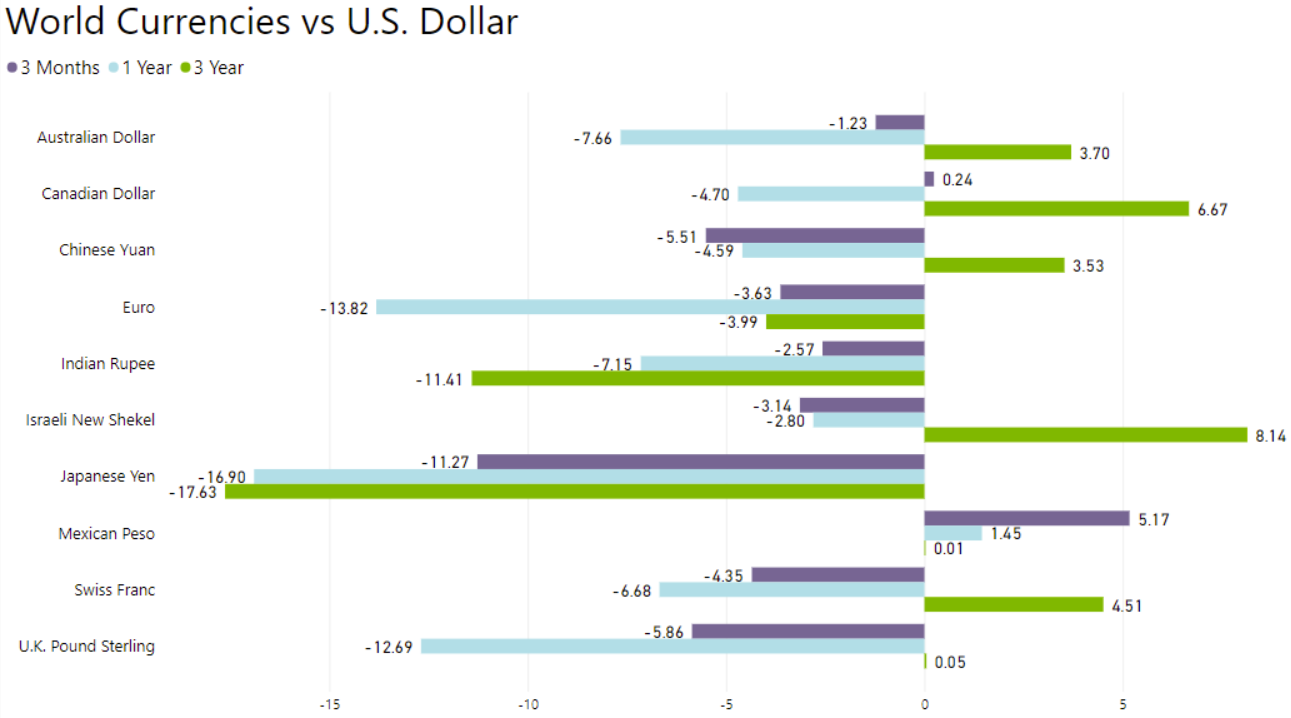

Brandon Yee, CFA, CAIA – Research Analyst
Brandon conducts investment due diligence for Versant Capital Management, and designs and implements tools and processes to support the firm’s research. His background in biology and finance help him to look at challenges from multiple angles, resulting in unique and well-rounded approaches and solutions.
Disclosure
Please remember that past performance may not be indicative of future results. Different types of investments involve varying degrees of risk, and there can be no assurance that the future performance of any specific investment, investment strategy, or product (including the investments and/or investment strategies recommended or undertaken by Versant Capital Management, Inc.), or any non-investment related content, made reference to directly or indirectly in this article will be profitable, equal any corresponding indicated historical performance level(s), be suitable for your portfolio or individual situation, or prove successful. Due to various factors, including changing market conditions and/or applicable laws, the content may no longer be reflective of current opinions or positions. Moreover, you should not assume that any discussion or information contained in this article serves as the receipt of, or as a substitute for, personalized investment advice from Versant Capital Management, Inc. To the extent that a reader has any questions regarding the applicability of any specific issue discussed above to his/her individual situation, he/she is encouraged to consult with the professional advisor of his/her choosing. Versant Capital Management, Inc. is neither a law firm nor a certified public accounting firm and no portion of the article content should be construed as legal or accounting advice. If you are a Versant Capital Management, Inc. client, please remember to contact Versant Capital Management, Inc., in writing, if there are any changes in your personal/financial situation or investment objectives for the purpose of reviewing/evaluating/revising our previous recommendations and/or services. A copy of the Versant Capital Management, Inc.’s current written disclosure statement discussing our advisory services and fees is available upon request.
